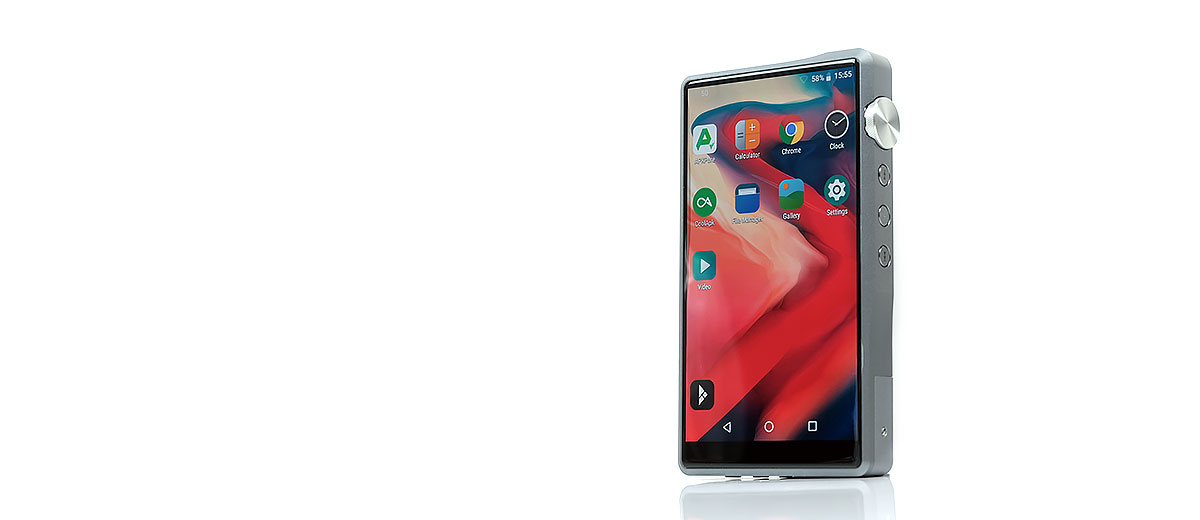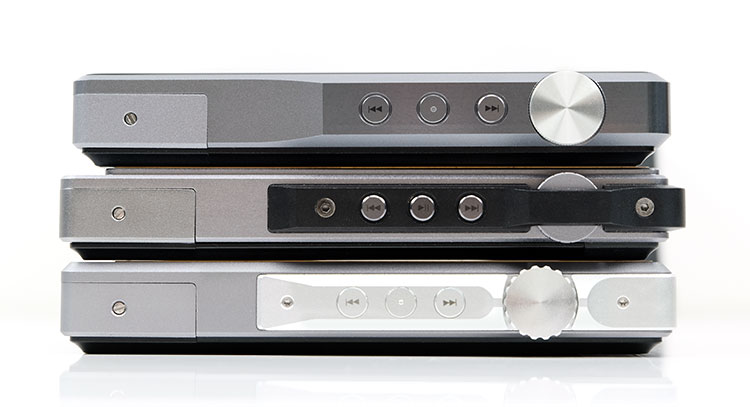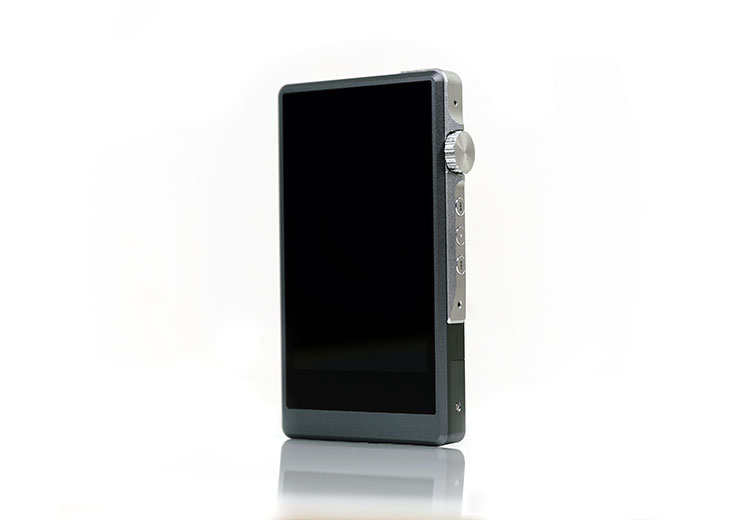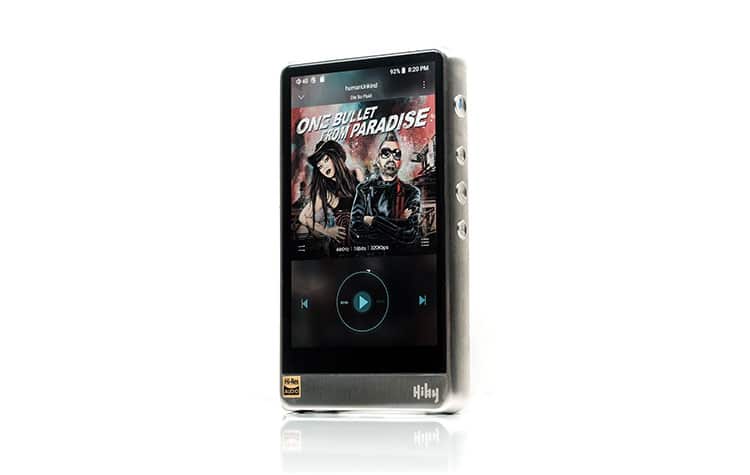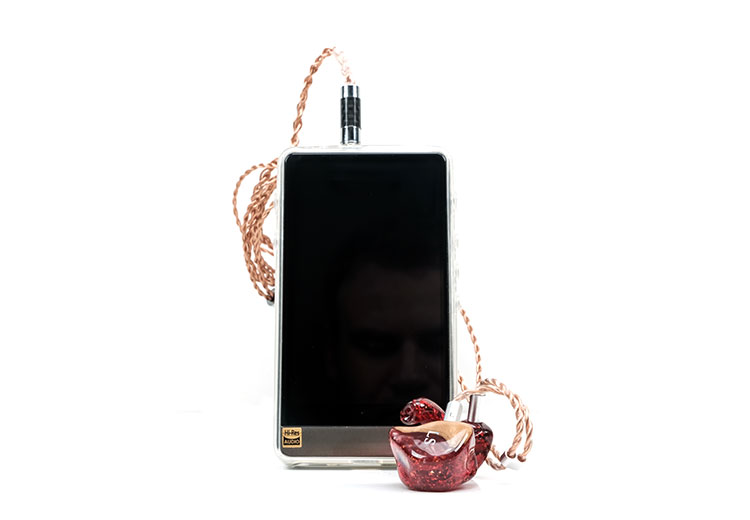Select Comparisons
iBasso DX200
$869
Features
The DX200 is the former flagship and has now been discontinued in favor of the DX220. The price increase is marginal given the considerable upgrades to the original DX200.
The DX200 4.2″ 720p IPS panel was good in 2017 but pales in comparison to the borderless 5″ 1080p IPS panel of the DX220. The viewing angles are supreme and perhaps the best-looking screen on a DAP in the market right now.
The DX220 is also slightly shorter, with a more refined build and a wireless antenna now just beneath the rear panel instead of stuck inside the main body. Our tests show that the DX220 now seems to be better at picking up a BT signal.
Of course, not just signal but transmission over distance has vastly improved on the DX220 with BT5.0 compared to BT4.2 on the DX200. Both will transmit LDAC but the DX220 should be more capable of picking up higher transmission rates and longer distances.
Technical
Both DAPs continue to use the ES9028PRO DAC setup, however, the DX220 has expanded on its coding capability with native MQA decoding and a bit-perfect output. The two DAPs will still decode up to DSD512 and PCM 32BIT 384kHz. Both will operate in USB-DAC mode and as of writing the latest DAC driver from iBasso is compatible for both.
Mango on the DX220 is now much better in my eyes. It is easier to use, has less drill down clicking on the app version, and includes an excellent PMEQ system. The DX200 still only offers the 10-band Graphical EQ and no PMEQ and also requires a bit more swiping left and right to access a fixed library system.
Both still dual boot into Mango but the app experience is more or less mirrored here with the newer Mango OS much more attractive OS to use but missing a few category features at this early stage.
Performance
The DX220 comes with the new AMP1 MKII and a 3-stage gain system. It is just as powerful as the older AMP1 Gen 1 yet has a much lower gain stage and noise floor to accommodate the latest generation of ultra-efficient IEMs.
With that blacker background on the DX220/AMP1 MKII combo, you also get an airier more holographic soundstage compared to the DX200/AMP1 pairing. Actually, it makes the DX200 presentation sound somewhat vague and lacking a little focus. The imaging on the DX220 stretches out wider and deeper and to my ears sounds a lot more accurate in terms of positioning.
The timbre on the two is also slightly different also. The DX220/AMP1 has a touch more warmth in the lower mids when we tested it with the Solaris and the IT04. You could argue a slightly softer tone to its instrumental timbre with more bass bloom.
The DX220/AMP 1 MKII combo is more reference sounding with a bit more treble extension and air. It has less lower-midrange warmth or mid-bass bloom with the Solaris instead of opting for a more neutral and accurate instrumental timbre and with much better instrumental separation.
iBasso DX150
$499
Features
The DX150 is the mid-fi version of the DX200 though still an excellent player, particularly at the $500 price point. It shares many of the features of the DX200 so the comparisons are quite similar on a feature and technical level.
The DX150 does have a slightly different build and form factor to both the DX200 and DX220 with a right panel volume dial that lacks the larger DX200 guard and physical buttons that are as big as the DX220. However, it is still not as refined in the CNC finishing as the DX220 nor as sleek in the dial and button integration.
The DX150 uses the same 720p 4.2″ IPS panel as the DX200 so again, the DX220 5″ 1080p IPS panel is just miles ahead, particularly with its high viewing angle, Corning Gorilla glass, and almost borderless design. No competition here.
Mango on the DX150 is the same as the DX200 and that means a step behind the new easier UI of the DX220 Mango build for both app and OS. You do not get a PMEQ application either on the DX150.
Technical
The DX150 opts for a dual AK4490EQ DAC chipset which chews less power than the DX220’s ES9028PRO chipset but is also a lot older and has a lower decoding upper threshold of DSD256. It also does not unfold and natively render MQA nor does the DX150 Android 8 platform have a bit-perfect output like the DX220.
The DX150 also has BT4.2 like the DX200 and all 3 DAPs will do LDAC on Oreo 8 but only the DX200 has BT5.0. The DX150 also only has 2Gb of RAM compared to the DX220’s 4GB making it slightly less stable for high loads.
Performance
The DX150 came out of the box loaded with the AMP6 card. Now as far as I know this card is not for sale on its own and only comes with the DX150.
We found the noise floor to be slightly higher using the DX150 with AMP6 compared to the DX220 also using AMP6 with efficient IEMs. AMP6 is also not as powerful as the new AMP1 MK2 though I do find it to be a little richer and more musical sounding than the reference sound of the new AMP1.
That being said the level of detail and instrumental separation combined with the black background and 3-stage capability of the DX220 makes the AMP1 MKII the more technically capable AMP card covering a wider base of efficient IEMs and headphones.
Tuning
As for the tonality or tuning the DX150/AMP 6 pairing has a more low-end body, a richer instrumental timbre, and a slightly musical tilt that I tend to associate with AK4490EQ DAC chip implementations.
The DX220/AMP1 MK2 is cleaner, more reference sounding with a black background, and has far more headroom also. You can hear that treble articulation stretch up and out far more than the DX150/AMP6 which tends to just roll off in favor of a smoother more relaxed sound.
There is really no less depth on the DX220 combo staging when testing the Solaris and IT04 either. Rather the DX220/AMP1 MKII pairing sounds much tighter, better defined, and more spacious sounding than the DX150’s low-end.
That theme carries right into the midrange performance with these two monitors. Imaging cues are far easier to detect, the dynamic range sounds more convincing and like the DX200 comparison leaves the DX150 sounding a little vaguer and imprecise.
The level of resolution and degree of superior instrumental separation at times can be stark when comparing these two. Sure, you lose a little bass body but the accuracy and perceptible level of nuanced detail from that black background make the DX220/AMP1 MK2 combo just so much more engaging to my ears.
HiBy R6 Pro
$799
Features
As of now probably the strongest competitor to the DX220. This is a slightly smaller DAP but in the case of the Stainless-Steel version a much heavier DAP than the DX220. Some people might find the smaller form factor easier to manage in the hand for day-to-day use.
Like the DX22o the R6 Pro uses a Corning Gorilla glass borderless IPS screen which is immaculate, one of the best. However, the DX220 screen is now a 1080p with a higher dpi compared to the 720p of the R6 Pro and is also significantly bigger at 5″ compared to 4.2″.
Also, amazingly, there is more lower-base bezel on the R6 Pro than on the DX220 which I would never have thought possible.
Both DAPs have a single slot microSD card slot though the DX220 has more onboard memory at 64Gb compared to 32GB on the R6 Pro. These two DAPs are USB-DAC, OTG capable for flash drives and digital audio.
Technical
Both use Oreo 8 and both are LDAC capable though the R6 Pro uses BT4.2 and not BT5. The R6 Pro has no dual boot capability but both DAPs do deploy a bit-perfect output architecture. The one key advantage here for the DX220 is the native MQA unfolding and rendering.
There is no native support outside of TIDAL yet for the R6 Pro and decoding stops at DSD256 compared to DSD512 on the DX220.
Both use dual Sabre DAC platforms, however, the R6 Pro opts for a dual ES9028Q2M as opposed to the ES9028PRO of the DX220. The Q2M is only dual-channel stereo but should draw slightly less power than the PRO version. As such, combined with the smaller 720p screen the battery life on the R6 Pro is longer at 10-12 hours compared to 7-8 hours on the DX220.
Speed-wise the R6 Pro is faster with a higher CPU clock rate than the DX220 and the DX200 but it will be interesting to see in the long run how the stability of the DX220 4GB compared to the 3GB of the R6 Pro performs.
Performance
The R6 Pro comes with a single fixed amp stage unlike the flexible AMP card system of the DX220. True, that means a higher cost of ownership to get all the cards but on the flip side, you get far more flexibility.
The R6 Pro’s new amp stage is powerful at 750mW into 32Ω with a 4.4mm option. This is compared to approximately 1.2W into the same load for the AMP1 MK2 and a 2.5mm TRRS option so not quite as powerful as the AMP1 MKII. Both have dedicated line-outs.
Both DAP amp stages have really low sub-ohm output resistance so there is now impedance skew on either. However, the AMP1 MK2 is by far the more refined solution for highly efficient IEMs. The Solaris will show hiss on the R6 Pro’s higher noise floor whereas it has a nice black background using the 3-stage gain on the DX220/AMP1 MKII combo.
Tuning
There are a few differences in the tuning of these two DAPs. The first is the slight roll-off on the R6 Pro top-end which tends to just pull back a little on odd-harmonic overtones in favor of, the second difference, a fuller-sounding lower-midrange as well as a thicker more even-harmonic biased instrumental and vocal timbre.
The R6 Pro is going in for a bit more of a musical and forgiving tone.
The DX220/AMP1 MK2 is more linear sounding, not as punchy but not overly analytical either. It does have a lighter tone, and a more neutral timbre but it reaches far more into the upper treble and sounds airier and more open than the R6 Pro.
That blacker background and better instrumental separation on the DX220/AMP1 MK2 also delivers a more holographic soundstage than the R6 Pro. The R6 Pro sounds a touch more intimate to my ears with a closer richer vocal presence.
Imaging is way more vivid also on the DX220. Do not get me wrong, the R6 Pro is accurate in placement, but that cleaner harmonic balance on the DX220/AMP1 MK2 makes it easier to pick out the cues with our test IEMs, the Solaris and the IT04.
Our Verdict
Ok, let’s cut to the chase on this one. At the time of writing, the DX220/AMP1 MKII combo is the best sounding DAP for under $1000. No question iBasso has doubled-down on the already excellent value DX200 from 2017 and produced a stellar sound signature update for a minimal increase in price in 2019.
This is a neutral reference sounding AMP card and DAP combination with a superb low-noise floor, expansive soundstage, and incredibly black background for an analog amp stage.
It’s got the chops for big headphones and a deft hand for sensitive armature drivers alike. It also has impressive EQ tweaking potential such as that PMEQ option in Mango to fine-tune almost any pairing to your personal preference.
It is still not the fastest DAP in the market as of today and some of that reasoning is down to the battery demands and that lush new big 5″ screen. That superb 5″ 1080p IPS panel will have plenty of people drooling despite the average battery life and overall OS speed.
This is a quality-looking visual presentation right now with a stellar sound performance and a price that, in today’s market, is very hard to find fault with. You are gonna like this a lot!
iBasso DX220 Specifications
- OS: Android
- DAC: Dual ES9028Pro
- Output Ports: 2.5BAL, 3.5PO, 3.5LO, SPDIF
- Screen: 5.0inch 1080P Full Screen 455 ppi + Gorilla Glass + Nano-hydrophobic
- CPU: Octa-Core
- USB-DAC: XMOS
- Bluetooth: V5 Support LDAC, aptX
- USB Port: USB Type-C (Both data transfer and charging)
- WiFi: 802.11 b/g/n/ac (2.4Ghz/5Ghz)
- Memory: 4GB RAM, 64GB ROM, 1 microSD(TF) slot
- Battery: 4400mAh, 3.8V (Supports QC3.0 and PD2.0)
- Dimensions: 126mm * 70.5mm * 18.7mm
- Weight: 240g
-
2.5mm Balanced Output
- Output Voltage: 6.2Vrms
- Frequency Response: 10HZ-45KHZ+/-0.3dB
- S/N: 125dB
- THD+N: -0.00018% (no load, 3Vrms)
- -0.0002% (32Ω load, 3Vrms)
- Crosstalk: -119dB
-
3.5mm Single Ended Output
- Output Voltage: 3.1Vrms
- Frequency Response: 10HZ-45KHZ+/-0.3dB
- S/N: 123dB
- THD+N: -0.00031% (no load, 1.8Vrms)
- -0.00035% (32Ω load, 1.8Vrms)
- Crosstalk: -117dB
-
Line out
- Output Voltage: 3.0Vrms
- Frequency response: 10HZ-45KHZ+/-0.3dB
- S/N: 122dB
- THD+N: -0.00035%, -107dB (no load, 1.8Vrms)
- Crosstalk: -116dB

